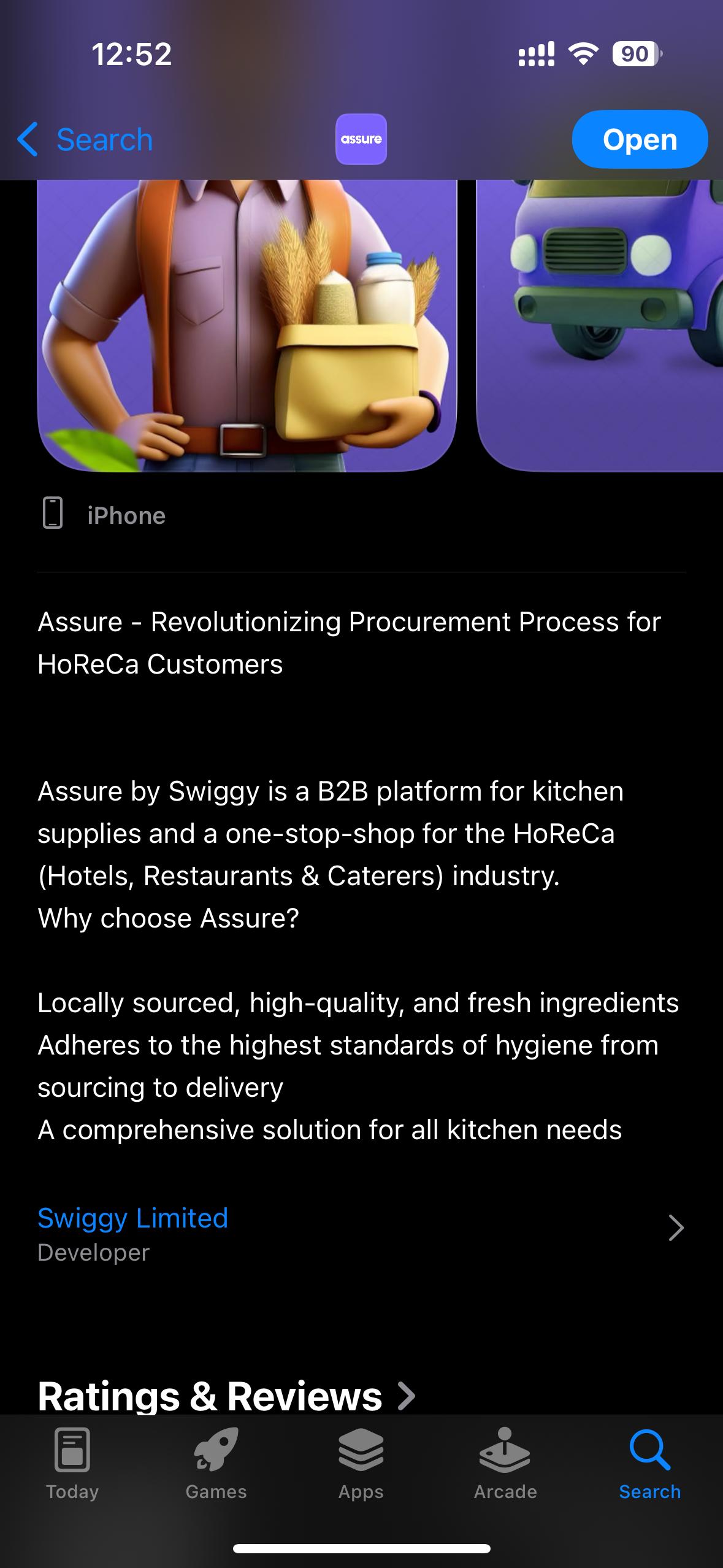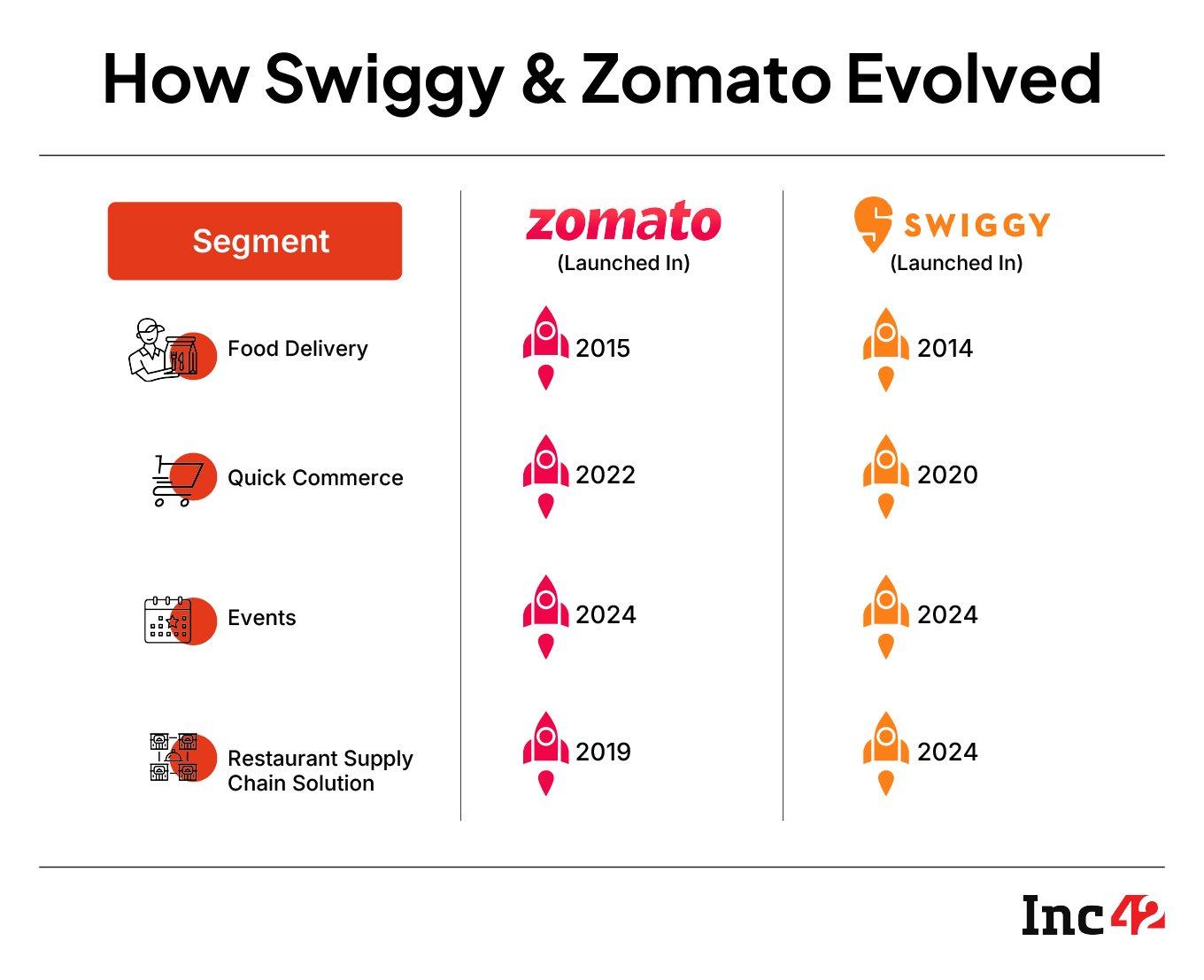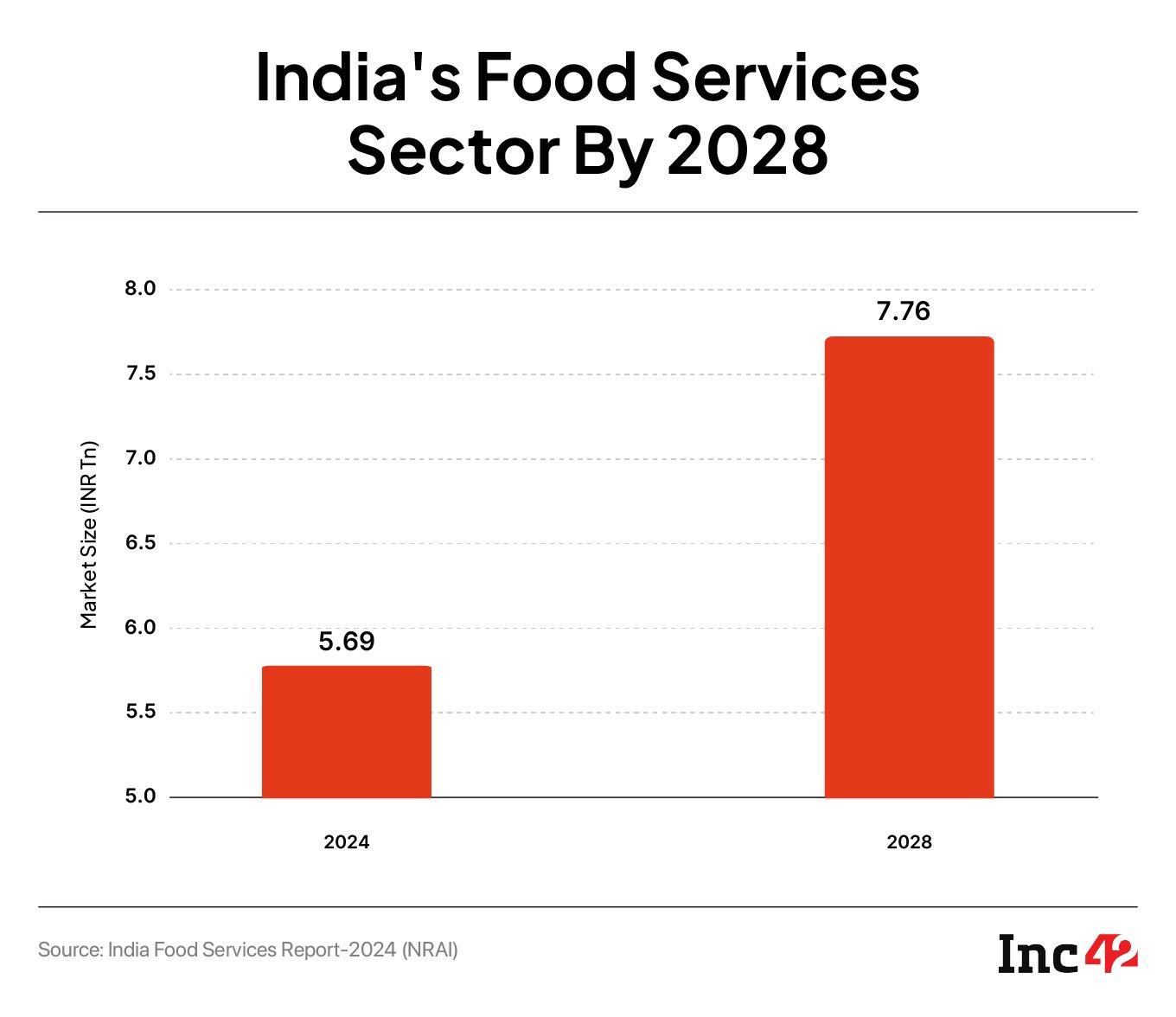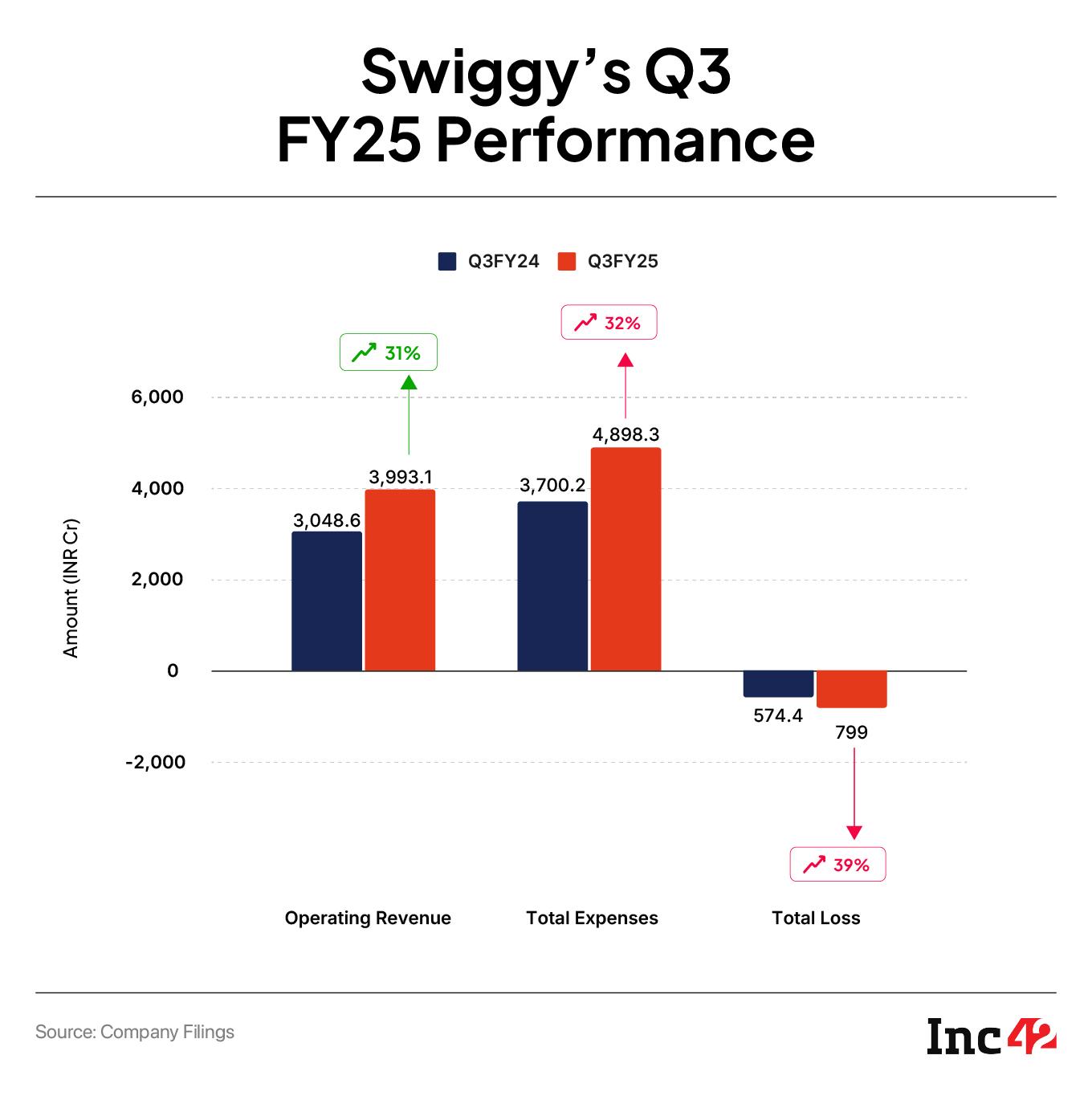Every morning, Raj, the owner of a bustling café in Mumbai, meticulously plans his day, ensuring that he is fully rationed to serve his customers. However, no matter how well he plays, it is always difficult to tide through the day without supply-side hiccups.
For a long time, Raj has juggled multiple suppliers, negotiated costs, and dealt with the unpredictability of India’s unorganised food supply chain. With fluctuating prices, delayed deliveries and vendor reliability issues, running a restaurant is a constant battle with procurement.
This was precisely what Zomato sought to change when it launched Hyperpure in August 2018. The idea was simple — provide kitchen supplies and a more organised supply chain solution to the hotels, restaurants & caterers (HoReCa) industry.
The B2B restaurant supply chain vertical empowers restaurants to source everything from fresh produce to meat and dairy from farmers and suppliers. Per Hyperpure’s LinkedIn page, it now serves 100+ cities across India, delivering over 4,000 products to 40,000+ partners.
But, there was enough white space then and there is enough now. For one, Zomato is the only organised player in this segment in India, which leaves enough scope for experiments, changes, pivots, expansions and innovation.
This is probably what Swiggy, too, must have thought before floating the Assure app in September last year. With Assure, Swiggy wants to revolutionise the “procurement process for HoReCa customers” — at least that’s what the Assure app claims.

Now, before we dive right into understanding what Assure brings to the table, let’s first talk about the potential peeves of Hyperpure users, eventually transitioning to where Assure fits in the B2B supply-side equation.
Hyperpure’s Blind SpotsWhile Zomato’s Hyperpure has made significant inroads into the restaurant supply chain, it still leaves enough room for further optimisation in pricing, logistics, and product variety.
For one, even after seven years, Hyperpure has not been able to scale its operations across diverse restaurant formats. According to the restaurateurs Inc42 spoke with, Hyperpure doesn’t fully meet the needs of large chains with multiple locations or smaller regional restaurants struggling with supply chain inefficiencies.
Besides, Zomato’s Hyperpure operates on a cash-and-carry model. “This means that restaurants are forced to settle dues directly from their earnings. While the model helps Zomato manage dues efficiently, it can be financially restrictive for larger chains that prefer more flexible credit options or structured payment terms,” a restaurant owner said, requesting anonymity.
Then, restaurateurs feel that sourcing through Hyperpure exposes them to fluctuating raw material prices. The absence of fixed-price contracts also impacts their long-term cost planning.
While Hyperpure does ensure 2-3 day fulfilment even in smaller cities like Kanpur, it does not yet provide real-time inventory tracking or on-demand, same-day deliveries. There is a significant white space here as many restaurants or kitchens are often in dire need of last-minute procurement.
Another area is pre-processed essentials, like chopped vegetables, sauces, or ready-to-use ingredients, to reduce preparation time in kitchens. As of now, Hyperpure only supplies fresh ingredients, including vegetables, dairy, and meat.
According to industry observers, what the market currently needs is a more optimised supply chain to make procurement more efficient, predictable, and stress-free. To carve out a niche for itself, Swiggy needs to take a different route than Zomato — the one that is more skewed towards the needs of its users.
The company will have to literally assure (no pun here) restaurants that it has stepped into the market to make a difference and not just to ape its closest rival — even though it now has all the arrows that Zomato flaunts to have in its quiver.

However, what’s surprising is that the company has kept its Assure plans very close to its heart. So far, it has also refrained from revealing anything about its geographies — the cities it is currently catering to.
However, a few restaurant owners we spoke with have hinted that Assure is currently being piloted in Bengaluru only. We have reached out to the company for comments, but there has been no response thus far.
Is Aping Hyperpure An Attractive Proposition?Zomato launched Hyperpure in 2018 to leverage its extensive restaurant network and create an integrated supply chain to ensure quality and cost efficiency.
According to the company’s filings, the vertical reported INR 80 Cr in revenue in the first quarter of the financial year 2021-22 (FY22). From there, Hyperpure’s revenue has grown nearly 1,000%, if we were to look at the INR 859 Cr it harvested in Q3 FY25. Not only this, Hyperpure’s adjusted EBITDA loss improved to INR 19 Cr in Q3 FY25 from an adjusted EBITDA loss of INR 34 Cr in the year-ago period.
“Zomato has been doing B2B for some time, which proves there is already a market need for such services. Swiggy, too, has an established working relationship with restaurants due to food delivery. This move aligns naturally with its existing services within the ecosystem,” Sateesh Meena, the founder of ecommerce analytics firm Datum Intelligence said.
Highlighting what else makes this line of work an attractive proposition for Swiggy, Karan Taurani, the VP of Elara Capital, said that the restaurant supply chain business is only 20% organised. Then, despite operating with 10-20 outlets, many restaurants are not remotely adept at managing supply chains efficiently. These two factors alone give Swiggy enough headroom to expand and grow.
Meena added that Swiggy’s progression makes sense as the market opportunity in this segment is massive, and with scale, profitability won’t be a scarce commodity.
Moving on, according to industry experts, the entry of Swiggy in the B2B food supply business could not have come at a better time. This is because Hyperpure has already done most of the groundwork for Swiggy in the last seven to eight years. From here, Swiggy only needs to study the market to offer what Hyperpure couldn’t.

The opportunity in the restaurant supply chain space is massive, but profitability won’t come overnight. As per industry experts, new players in supply chain logistics absorb losses for 3 to 5 years before fetching sustainable margins.
This is why Swiggy’s core revenue drivers will continue to be food delivery and quick commerce for a while now. “The restaurant supply chain business is more of a complementary play — an avenue to leverage existing infrastructure and unlock additional revenue rather than a primary growth engine,” said Meena.
However, a key advantage of B2B businesses like Hyperpure and Assure is that order values are much larger than in quick commerce, making expansion into the space strategic.
While it may weigh on the balance sheet in the short term, it has the potential to contribute significantly to revenue in the long run.
“There might not be major expenses upfront. Hyperpure, for instance, hasn’t spent much on marketing since it integrates directly with restaurants on its platform. This keeps customer acquisition costs low. However, logistics and delivery costs could add some pressure. While revenue will offset part of these expenses, margins may stay tight, especially in the early stages,” Kush Ghodasara, CMT, managing partner, InvestValue explained.
A Price War Is InevitableAccording to Ghodasara, Swiggy may choose not to undercut Zomato by offering promotional deals or setting a minimum order value, but a price war is inevitable. This could squeeze margins for both players. Swiggy will likely offer discounts to attract restaurant partners, forcing Zomato to adjust its pricing strategy to stay competitive. But, these dynamics will settle eventually.
“Think of it like the telecom industry, where a few key players dominate the market. Customers may switch between Jio and Vodafone for short-term benefits, but the reality is that they are stuck with a few players in an otherwise large market,” Ghodasara said.
While existing relationships with restaurants will play a role in early deals, Swiggy will need to lure customers away from Zomato with better pricing and added value. However, since B2B supply agreements are typically for the long term, switching won’t be easy.
However, Meena believes the bigger challenge is baiting restaurants dependent on local vendors into switching to an organised supply chain — nothing that Hyperpure hadn’t already tried before.
“This is the real hurdle. Restaurants already using Hyperpure understand the benefits. Swiggy’s key task will be to educate and onboard those who’ve never used a structured supply chain, showing how it can streamline operations, improve quality, and cut costs over time,” Meena explained.

Swiggy Assure has been on the Google Play Store for nearly seven months, yet the company has shared nothing about its plans to rival Hyperpure. Swiggy has not made an official announcement about the app’s rollout or its strategy for this vertical. However, sources have said that an official launch of Assure is expected soon.
What’s even more intriguing is that Swiggy’s RHP, filed with SEBI in late October ahead of its November 13 listing, makes no mention of Assure.
This raises a key question — Is Assure just a catch-up-to-Zomato exercise for Swiggy right now?
According to Taurani, Swiggy’s strategy seems to be closing the valuation gap with Zomato by tapping into the same market opportunities. Swiggy also entered into the live events segment last year with Scenes — a move that was seen as its answer to Zomato’s District.
Notably, Zomato currently holds an m-cap of INR 1.91 Tn while Swiggy stands at INR 773.07 Bn, at the time of publishing this article. This creates a valuation gap of approximately 60%. It is a no-brainer that Swiggy needs a lot of catching up. Even in terms of revenue, Zomato harvested INR 5,405 Cr in Q3 FY24 and Swiggy generated INR 3,993.1 Cr.
“Zomato and Swiggy have evolved into near replicas of each other, consistently expanding their offerings to capture every aspect of consumer spending, be it food delivery, dining out, groceries, or even events. Their approach to restaurants follows a similar playbook. Just as they aim to be the go-to platform for consumers, they also want to be indispensable to restaurant partners by providing end-to-end services, including supply chain solutions,” Meena said.
As per market analysts, Swiggy’s expansion into the restaurant supply chain business will likely boost its valuation. While Zomato enjoys its first-mover advantage, Swiggy’s move into B2B procurement strengthens its overall ecosystem and makes it more attractive to investors in India’s food service market expected to breach the $125 Bn mark by 2029 on the back of rising urbanisation, increasing disposable incomes, and changing consumer habits.
[Edited By Shishir Parasher]
The post appeared first on .
You may also like

"SAD creates ruckus": Harpal Singh Cheema on scaling down of security of Majithia

Huge £7.3m Saturday lottery jackpot won by lucky single ticket holder

'Stop taking advantage': US slaps South Sudan with sweeping visa ban

Tottenham duo singled out for praise by Pedro Porro amid Ange Postecoglou crisis

Baggage handler confirms exactly how your luggage is loaded onto the plane







